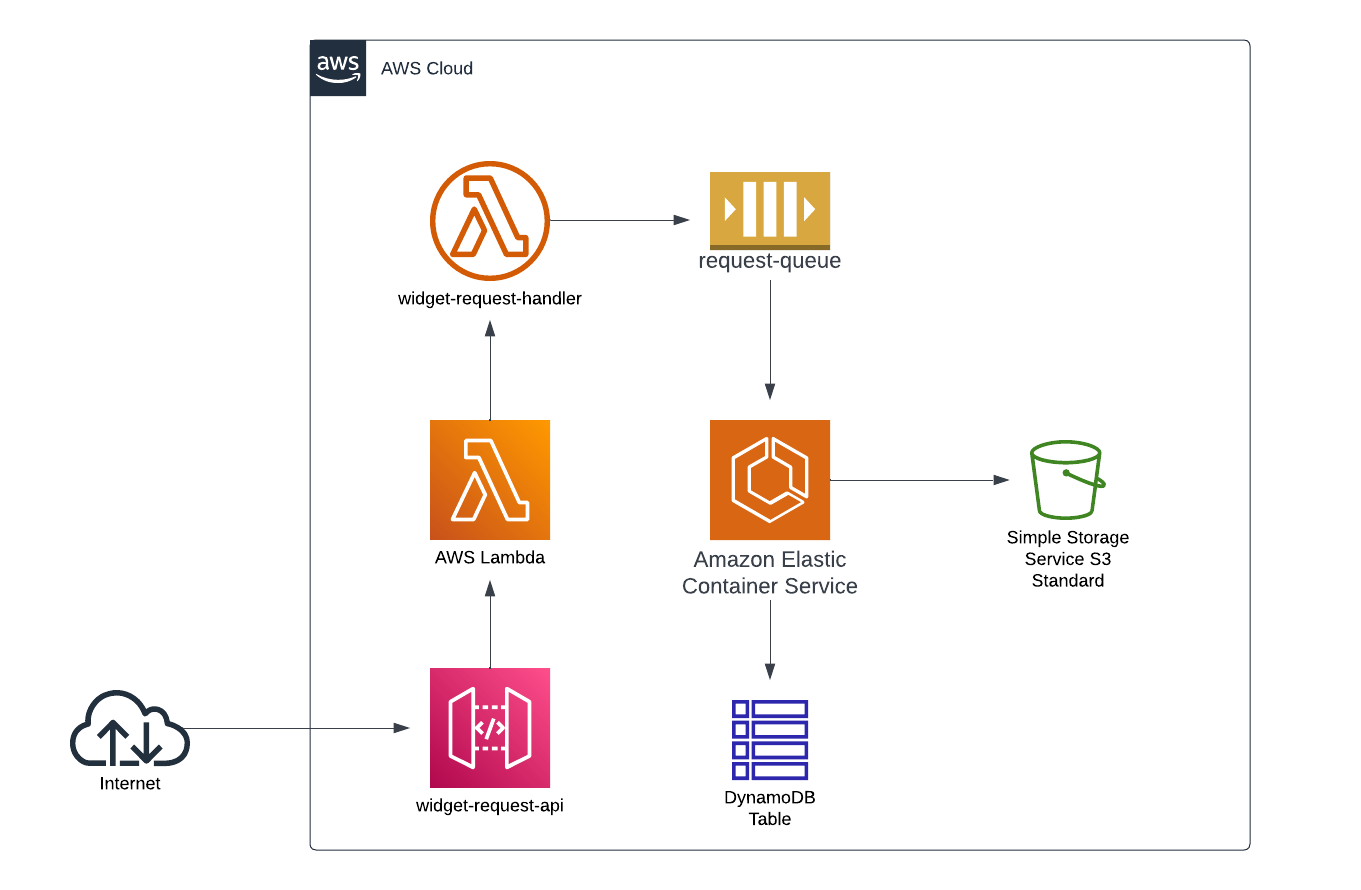Widgets
This was a project I completed in my CS5260 Cloud Development course at Utah State University. The project includes a command-line application written in Python that can manage "widget" objects that are stored in AWS S3 buckets or AWS DyanmoDB tables. It performs create, update, and delete operations on these widgets by reading widget requests from a designated source. Widget requests are formatted in JSON and can be read from an S3 bucket or an SQS queue. This command-line tool is called the consumer, since it will try to read as many requests from a resource as possible until its time limit is reached. In order to easily add new widget requests, I set up an API that triggers a lambda function which transforms API requests into widget requests. It then stores them in an SQS queue where they can be read by the consumer program.
How to Run
The consumer program requires you to specify the name of the resource where the widget requests are being stored and the name of the resource where the widgets are being stored or will be stored.
Example: python consumer.py -rb bucket_name_here -wt table_name_here
Parameters
A list of all parameters can also be found with the following command: python consumer.py -h.
- -rb, --readbucket : S3 bucket to retrieve widget requests from.
- -rq, --readqueue : SQS queue to retrieve widget requests from.
- -wb, --writebucket : S3 bucket to store widgets in.
- -wt, --writetable : DynamoDB table to store widgets in.
Design & Architecture
A UML diagram for the project can be found in the docs directory. The design follows the principles of modularization and abstraction in order to develop a
program that allows for new features to be seamlessly aggregated and reduces the complexities associated with maintaining and testing the system. The implementation of the consumer program is broken up mainly into retrievers and processors. Retrievers are used to retrieve widget requests from resources such as an S3 bucket or an SQS queue. They return WidgetRequest objects which can be processed by a processor. Processors will use the WidgetRequest object to determine what operation needs to be performed and saves the request in the format appropriate for the resource where it is being saved on AWS.
The following is a diagram of the AWS architecture used in this project:
Testing
The unit tests for the consumer program were implemented using the unittest framework from Python's standard library. Many of the unit tests interact with AWS services using the boto3 sdk, so they cover some aspects of integration testing in addition to the testing of individual components.
Directories
src/tests- contains unit tests for all the modules that compose the consumer program.src/tests/data- contains test data with both valid and invalid widget requests.src/tests/lambda_events- contains JSON files used for testing API events in the Lambda console.
How to run tests
To run all the unit tests, simply run the command python -m unittest discover.
More instructions
Logs
Logs will be automatically written to the src/logs directory each time the consumer program is run. They provide information about each operation performed by the
program. When known errors are caught, appropriate messages are displayed for use in debugging.
Docker
A dockerfile has been provided, so the consumer program can be packaged into a docker image. This allows the consumer program to be deployed in a cluster of containers for better scalability.
